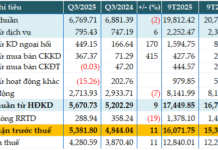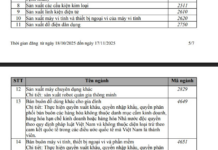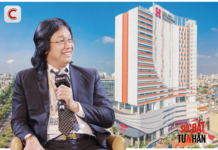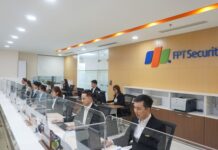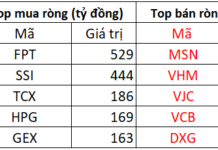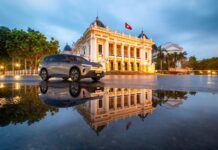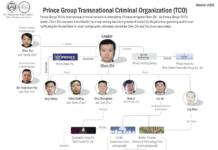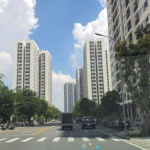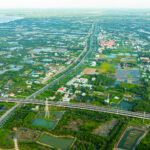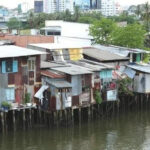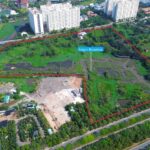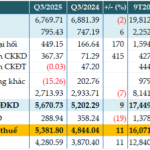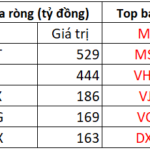At the recent 50-year Literature and Arts Summary Conference in Ho Chi Minh City, Secretary of the Ho Chi Minh City Party Committee Tran Luu Quang announced that the city had previously allocated land in the Ben Nha Rong area to an investor for a housing project. However, the Standing Committee of the Ho Chi Minh City Party Committee halted this plan to expand the Ho Chi Minh Cultural Space. Part of this area will be designated as a park, combined with the widening of Nguyen Tat Thanh Street and the development of public services, with no residential construction.
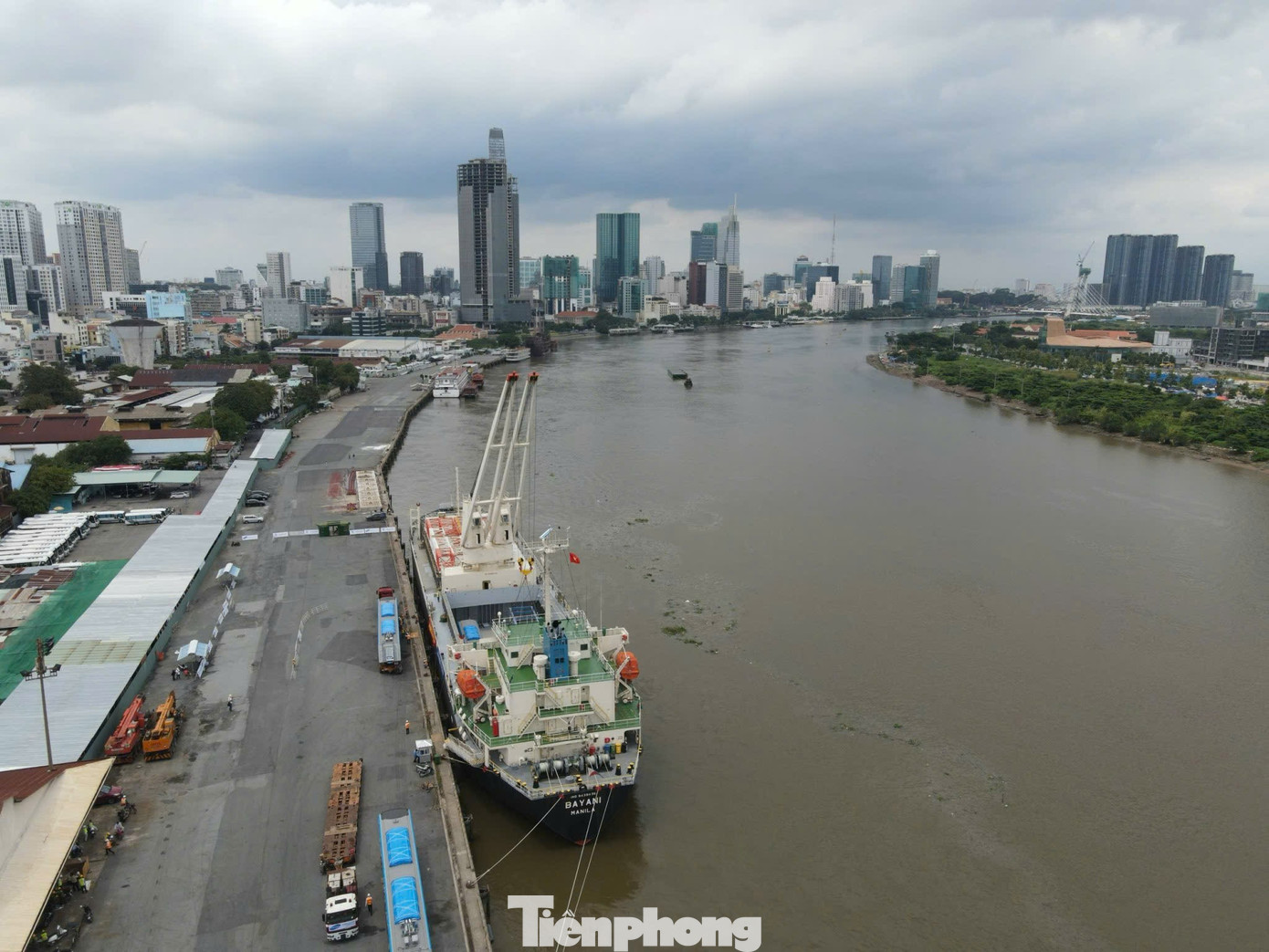
A close-up of the area in Ben Nha Rong where Ho Chi Minh City previously allocated land for a housing project.
According to the Ho Chi Minh City Department of Agriculture and Environment, following the directive from the Secretary of the Ho Chi Minh City Party Committee, the department has submitted a report on the implementation of public projects at 1 Ly Thai To (Vườn Lài Ward) and the renovation and expansion of the Ho Chi Minh Museum Branch in Ho Chi Minh City.
Regarding the renovation and expansion of the Ho Chi Minh Museum Branch, the Department of Agriculture and Environment stated that since the project has not yet received investment approval, its exact location is undetermined. The department based its report on the detailed 1/500 scale planning scheme for the former District 4 Port sub-zone, approved by the Ho Chi Minh City People’s Committee in Decision 6331/QĐ-UBND.
The project is located in blocks K1 and K2. Block K1 covers 15,049 m² and currently houses the Ho Chi Minh Museum, while Block K2 spans 14,229 m² and is planned as the Ho Chi Minh Museum Park. Ho Chi Minh City aims to adjust the project’s scope to encompass the entire 329,074 m² area of the former Nha Rong – Khanh Hoi project.
To proceed with the renovation and expansion of the Ho Chi Minh Museum Branch under the new scale, the Department of Agriculture and Environment proposed two implementation methods: public investment or a public-private partnership (BT contract without payment requirements). Phase 1 includes two common steps for both methods.
Step 1 involves obtaining general approval. The Standing Committee of the Ho Chi Minh City Party Committee will direct the Party Committee of the Ho Chi Minh City People’s Committee to provide overall guidance on the orientation and implementation of the Ho Chi Minh Museum Branch renovation and expansion project under the new scale.
Step 2 includes land clearance, asset seizure, and revocation of the investment approval for the Nha Rong – Khanh Hoi Complex Project. The Ho Chi Minh City People’s Committee will instruct relevant agencies to advise on land clearance and asset seizure for the Nha Rong – Khanh Hoi Complex Project, based on the court’s ruling in the case involving Van Thinh Phat Group. This step also involves revoking the previously approved investment for the Nha Rong – Khanh Hoi Complex Project and making localized adjustments to the city’s general planning for the Nha Rong – Khanh Hoi area.
Previously, the Nha Rong – Khanh Hoi Port Complex Project spanned approximately 31.5 hectares, strategically located along the Saigon River with a frontage on Nguyen Tat Thanh Street. In 2018, the Ho Chi Minh City People’s Committee approved a company to develop the project, which included a shopping center, 3,116 apartments, a school, and a medical station, with a total investment of 11 trillion VND.
The project’s prime location, near the former District 1 center, adjacent to Bach Dang Wharf, and opposite the Thu Thiem New Urban Area, was highly advantageous. The developer initially planned to complete the project by 2018, but it remains unrealized to this day.
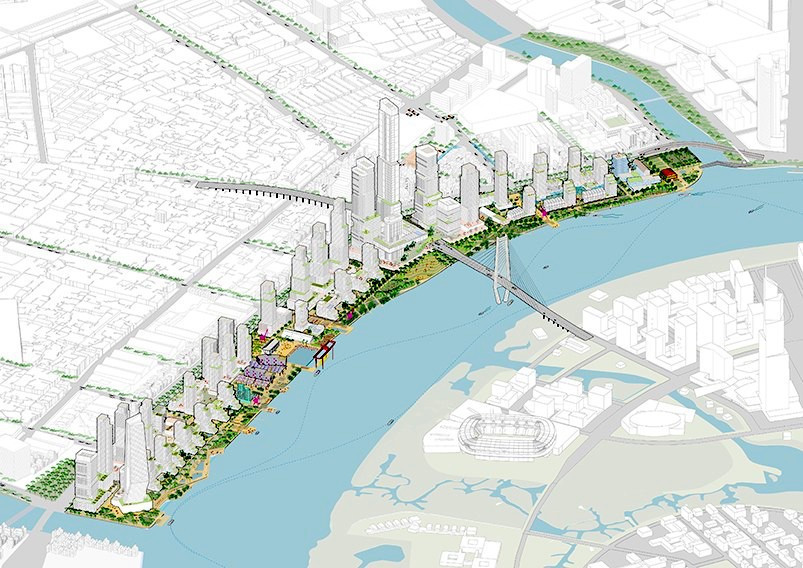
A rendering of the proposed Nha Rong – Khanh Hoi Complex Project.
According to Mr. Hoang Kim Hoai, General Director of Phuc Dien Land, the Ben Nha Rong area is historically significant as it is linked to President Ho Chi Minh’s journey to seek a path to national salvation. Expanding and connecting the cultural space around this area is both historically and planning-wise appropriate.
“Ho Chi Minh City faces significant pressure regarding green spaces and social infrastructure. While prime land has high commercial value, it cannot compare to the spiritual benefits and quality of life it provides when transformed into a park,” said Mr. Hoai.
In an interview with Tien Phong, Architect Khuong Van Muoi, former Chairman of the Ho Chi Minh City Architects Association, affirmed that this decision is wise, demonstrating a long-term and humane vision for urban development. Ho Chi Minh City lacks green spaces and community areas. Developing real estate in these areas would exacerbate traffic congestion and flooding, both locally and in the city center.
Mr. Muoi emphasized that the Ho Chi Minh Cultural Space should be more than a place to display artifacts or documents; it should be a vibrant space where people can walk, reflect, and connect with the city’s historical and spiritual values. If executed well, this project will be a significant milestone in the development of Ho Chi Minh City’s urban spaces, creating a modern, humane, and culturally rich city.
Regarding the land at 1 Ly Thai To, covering approximately 44,312 m² with a usable floor area of 7,101 m², managed by the Ministry of Foreign Affairs, the current status is a vacant Government Guest House with seven villas. Ho Chi Minh City plans to invest in and develop a public project on this site to serve the community.
To implement the public project on this land, the Department of Agriculture and Environment proposed following the procedures for public investment or a public-private partnership (BT contract without payment requirements). Phase 1 includes three common steps for both methods. Phase 2 comprises seven steps for public investment (expected to start in July 2026) and six steps for public-private partnership (expected to start in February 2026).
Transforming Ho Chi Minh City’s Green Lung: A $3 Billion Interchange Project Breaks Ferry Dependency
Experience the groundbreaking first interchange in Vietnam, designed to international standards akin to Singapore, strategically located in Cần Giờ. This transformative project eliminates the ferry dependency at Bình Khánh, seamlessly connecting Southern Ho Chi Minh City to the national highway network.
Latest Directive from Ho Chi Minh City on Relocating Residences Above and Along Canals and Waterways
In light of the delayed progress in implementing certain components of the urban renewal project for residential areas along canals and creeks in Wards 3, 4, and 5 (Chánh Hưng, Bình Đông, Phú Định), the Ho Chi Minh City People’s Committee has directed relevant departments, agencies, and the Ward Secretaries and Chairpersons to intensify their leadership and guidance. They are to ensure rigorous, effective, and timely execution of the project, adhering strictly to the established deadlines.
Sơn Kim Land Acquires Prime 10-Hectare Project in Ho Chi Minh City, Previously Held by Novaland
Saigon Broadway, a meticulously planned development, spans over 96,000 square meters and features 12 blocks of residential and office spaces, ranging from 25 to 35 stories in height. This ambitious project offers a total of approximately 3,200 units, designed to meet the diverse needs of modern living and working environments.






